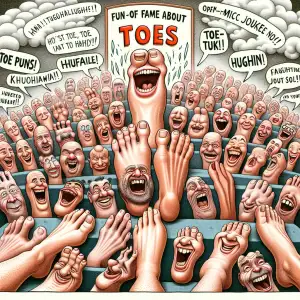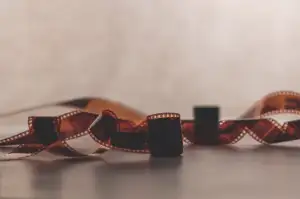The Magic of Ballet Music

- Ballet Music for Everyone
- The Magic of Ballet Scores
- Iconic Ballet Soundtracks
- Modern Ballet Music Trends
- Experience Live Ballet Performances
- Ballet Music Playlists
- Creating Atmosphere and Emotion
- The Evolution of Ballet Music
- Beyond the Stage: Ballet in Film
- Ballet Music for Relaxation
- Learning About Ballet Composers
- Sharing Your Love for Ballet Music
Ballet Music for Everyone
Ballet music evokes a sense of elegance and grace. It transports us to a world of delicate movements and powerful emotions. But ballet music is not limited to the walls of the theatre. It has permeated our lives in countless ways. Think about the iconic strains of Tchaikovsky's Swan Lake or the fiery rhythms of Stravinsky's The Rite of Spring. These pieces have transcended their original purpose and become part of our collective musical consciousness.
Classical ballet typically features original scores specifically composed for the performance. Composers like Pyotr Ilyich Tchaikovsky (Swan Lake, The Sleeping Beauty) and Igor Stravinsky (The Rite of Spring, Petrushka) created masterpieces that are forever intertwined with the ballets they accompany. Their music doesn't just provide a backdrop to the dance, it enhances the storytelling, evokes specific emotions, and helps to create the magical atmosphere of ballet.
However, ballet isn't confined to the world of classical music. Contemporary ballet productions often draw inspiration from a broader range of musical genres, including jazz, electronic music, and even pop. This eclectic approach reflects the evolving nature of ballet and its willingness to embrace new forms of artistic expression. Think about the groundbreaking work of choreographers like Twyla Tharp, who incorporated jazz and pop music into her ballets, or the innovative use of electronic music in contemporary ballet productions.
Beyond the stage, ballet music has found its way into our lives through movies, television shows, and commercials. Its use in popular culture often highlights dramatic or romantic scenes, showcasing the emotional depth and versatility of ballet music. From the use of Swan Lake in Darren Aronofsky's film Black Swan to the appearance of ballet dancers in commercials and music videos, ballet music adds a touch of sophistication and artistry to a wide range of media.
The beauty of ballet music lies in its ability to transcend cultural and linguistic barriers. It speaks to us on a visceral level, evoking a wide range of emotions from joy and excitement to sadness and contemplation. Whether you're a seasoned ballet aficionado or simply appreciate beautiful music, there's a world of ballet music out there waiting to be discovered. So, the next time you're looking for a musical escape, explore the world of ballet music. You might be surprised at how it moves you.
The Magic of Ballet Scores
Ballet scores are more than just background music. They are the lifeblood of the performance, driving the narrative, shaping emotions, and enhancing the ethereal quality of dance. From the dramatic crescendos of Tchaikovsky's Swan Lake to the delicate melodies of Debussy's Prelude to the Afternoon of a Faun, ballet scores have an uncanny ability to transport audiences to other worlds.
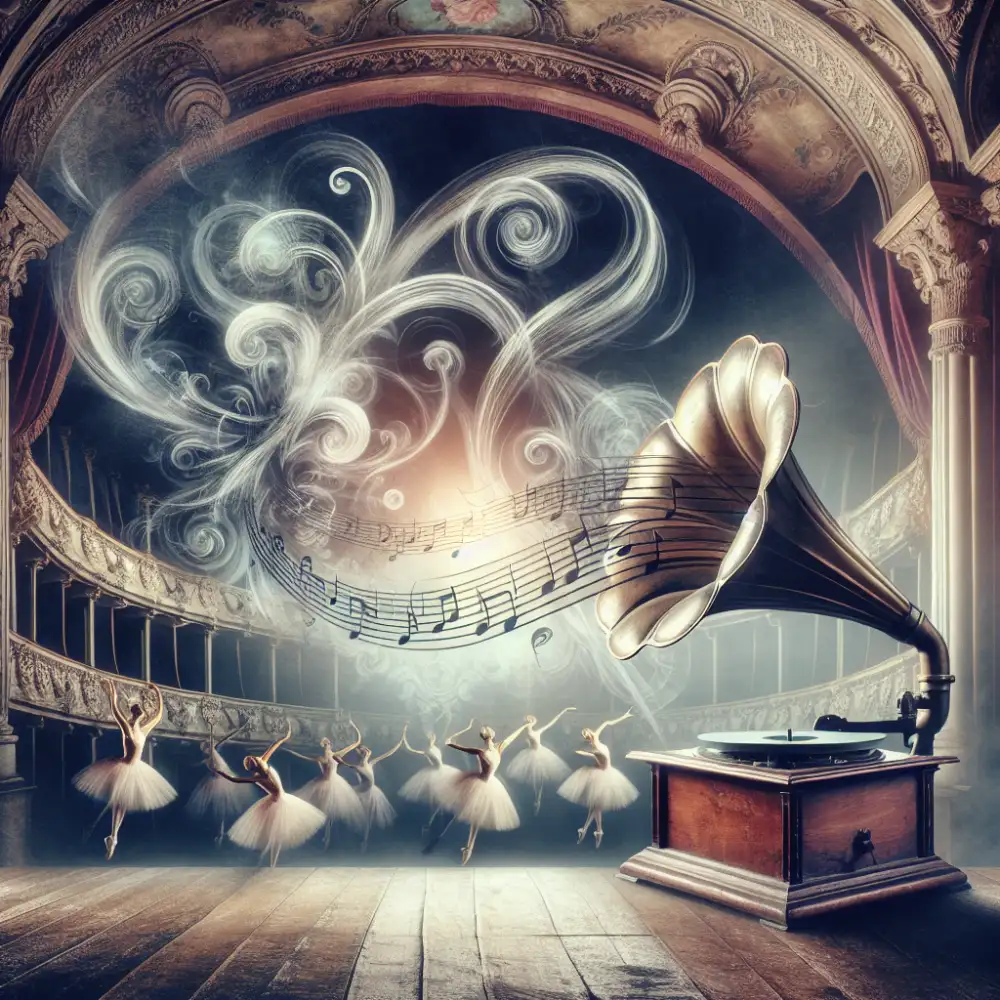
The marriage of music and dance in ballet is a delicate art. Composers must understand the intricacies of ballet vocabulary, crafting scores that complement the dancers' movements and enhance their storytelling. A soaring melody can accentuate a graceful leap, while a staccato rhythm might underscore the precision of footwork.
The use of leitmotifs, recurring musical themes associated with specific characters or emotions, is a common device in ballet scores. These motifs add depth and complexity to the narrative, allowing the audience to connect with the characters on a deeper level. Think of the iconic motif associated with the evil fairy Carabosse in The Sleeping Beauty, its discordant notes immediately signaling her malevolent presence.
While classical ballet often features original scores, contemporary ballet often draws inspiration from a broader range of musical genres. From jazz to electronic music, choreographers are pushing boundaries, exploring new ways to tell stories through movement and sound. This fusion of styles creates exciting and unexpected experiences for audiences, proving that the magic of ballet scores continues to evolve and inspire.
Iconic Ballet Soundtracks
Ballet, with its ethereal grace and storytelling prowess, has captivated audiences for centuries. Integral to this captivating art form is the music that accompanies it, elevating the dancers' movements and infusing them with emotion. Over the years, certain ballet soundtracks have achieved iconic status, their melodies forever intertwined with the steps they accompany.
Pyotr Ilyich Tchaikovsky's masterpieces reign supreme in the realm of ballet music. "Swan Lake," with its haunting strains and soaring melodies, transports audiences to a world of enchantment and tragedy. The iconic "Dance of the Little Swans" is instantly recognizable, its delicate yet precise rhythms mirroring the graceful movements of the cygnets. Similarly, "The Nutcracker" has become synonymous with the holiday season, its sparkling waltzes and whimsical character dances delighting generations.
Igor Stravinsky's groundbreaking score for "The Rite of Spring" revolutionized the world of ballet music. Its jarring rhythms, dissonant harmonies, and primal energy created a sense of raw power and ritualistic fervor that shocked and captivated audiences. This revolutionary work paved the way for modern ballet and continues to inspire awe and controversy today.
Sergei Prokofiev's "Romeo and Juliet" is a masterclass in musical storytelling. Through soaring melodies and heart-wrenching harmonies, Prokofiev captures the essence of Shakespeare's tragic love story. The "Dance of the Knights," with its powerful brass fanfares and driving rhythms, is instantly recognizable and has become synonymous with the Capulet family's grandeur and menace.
Beyond these iconic full-length ballets, certain shorter pieces have also become synonymous with the art form. Camille Saint-Saëns's "The Dying Swan" is a poignant solo that showcases the dancer's grace and expressiveness. Erik Satie's minimalist compositions for "Parade" challenged traditional notions of ballet music, while Dmitri Shostakovich's score for "The Golden Age" blended classical and jazz influences to create a vibrant and satirical work.
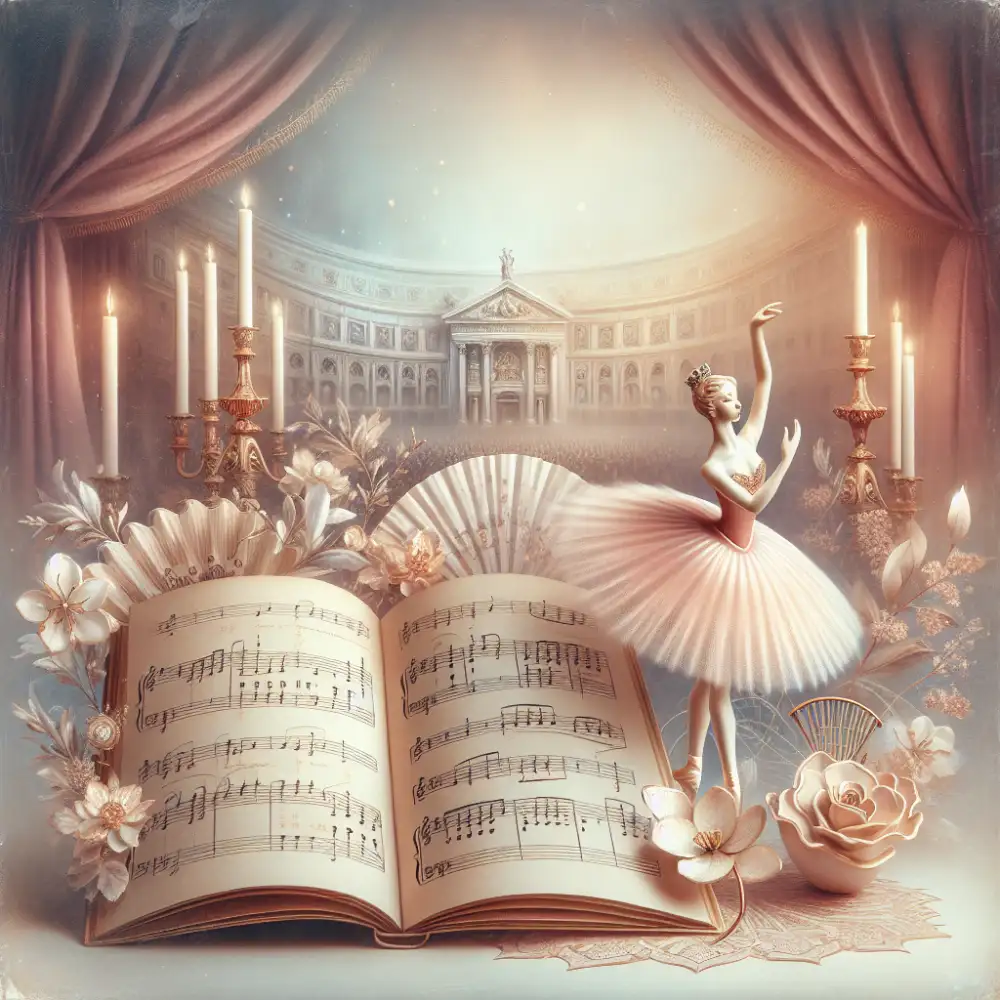
The music of ballet is as diverse as the dance form itself. From the romanticism of Tchaikovsky to the avant-garde sounds of Stravinsky, these iconic soundtracks have left an indelible mark on the world of dance, enhancing the emotional impact of the movements and transporting audiences to realms of beauty, drama, and wonder.
Ballet music is above all a suggestion, a web of filmy textures on which the dancers create their own more powerful and more specific magic.
Alistair Macaulay
Modern Ballet Music Trends
Modern ballet music has shattered the mold of classical expectations. Gone are the days when a symphony orchestra was the only option. Today, choreographers embrace a thrilling tapestry of sounds, mirroring the innovation of their movements. Electronic music pulses with the precision and power of a dancer's leap, adding a kinetic energy that resonates with contemporary audiences. Ambient soundscapes, often minimalist and atmospheric, create a sense of ethereal beauty, underscoring the emotional depth of a piece.
Collaborations between choreographers and composers are also flourishing. This direct dialogue leads to scores intricately woven into the fabric of the dance, each note reflecting and enhancing the movement. World music, with its diverse rhythms and instrumentation, is another rich source of inspiration. From the pulsating beats of Africa to the delicate melodies of Asia, these global influences infuse ballet with fresh energy and cultural depth.
The use of silence, too, has become a powerful tool. In the absence of sound, the audience is hyper-aware of every gesture, breath, and rustle of fabric, amplifying the raw emotion and physicality of the performance. This eclectic approach to music selection reflects the dynamism of modern ballet itself. It's a testament to the art form's evolution, its willingness to embrace the new, and its enduring power to move and inspire.
Experience Live Ballet Performances
The magic of ballet comes alive onstage, where athletic dancers transform music into movement. Experiencing a live ballet performance connects you to the music in a uniquely powerful way. The live orchestra breathes life into the score, creating a dynamic energy that washes over the audience. You hear every note, every crescendo, and every delicate flute solo, drawing you deeper into the emotional landscape of the ballet.
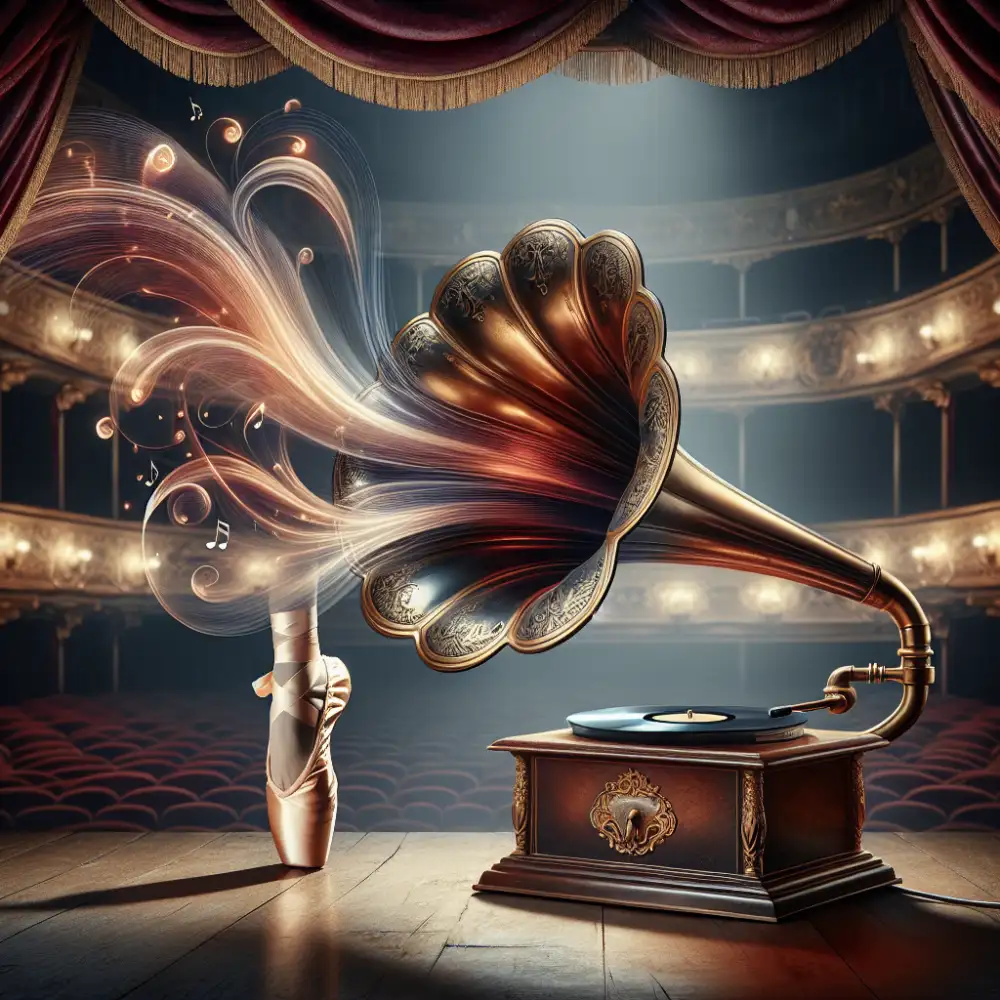

The music is more than just an accompaniment. It's the driving force behind the choreography, dictating the pace, mood, and even the narrative itself. As you watch the dancers move in perfect harmony with the music, you begin to understand the symbiotic relationship between sound and movement. A soaring melody might inspire a graceful adagio, while a percussive rhythm could drive a powerful sequence of jumps and turns.
Whether it's the sweeping romance of Tchaikovsky or the dramatic intensity of Stravinsky, experiencing ballet music live adds a visceral dimension to the art form. The music resonates through your entire being, leaving a lasting impression long after the curtain falls.
Ballet Music Playlists
Ballet music is as diverse as the dance form itself. From classical masterpieces to contemporary compositions, the music sets the tone and emotion for each graceful movement. Creating the perfect playlist for your ballet class or warm-up can elevate your experience.
| Feature | Romantic Ballet | Neoclassical Ballet | Contemporary Ballet |
|---|---|---|---|
| Time Period | Early 19th Century - Early 20th Century | Early 20th Century - Present | Mid 20th Century - Present |
| Typical Instruments | Full Orchestra (strings, woodwinds, brass, percussion) | Varies widely; can include full orchestra, smaller ensembles, or electronic music | Varies widely; often experimental, can include anything from classical instruments to electronic soundscapes |
| Melody & Harmony | Emphasis on melody; often lyrical and romantic; traditional harmonies | Focus on clarity and precision; can be more abstract and dissonant than Romantic; explores wider range of tonality | Highly varied; can be melodic or atonal, consonant or dissonant; often pushes boundaries of traditional music |
| Rhythm & Tempo | Often closely follows the dance steps; can be fluid and expressive; generally adheres to traditional time signatures | Can be more rhythmically complex and irregular; may explore unusual time signatures; often emphasizes precision and control | Highly varied; can be rhythmic or arrhythmic; often used to create specific moods or effects |
Start with the classics. Tchaikovsky's Swan Lake and The Nutcracker are timeless choices, offering a range of tempos and moods. Explore the enchanting world of Debussy's Prelude to the Afternoon of a Faun or the romanticism of Prokofiev's Romeo and Juliet. Don't shy away from ballet scores you might not immediately recognize. Shostakovich's ballets offer powerful and dramatic pieces, while Stravinsky's The Rite of Spring brings a primal energy to your playlist.
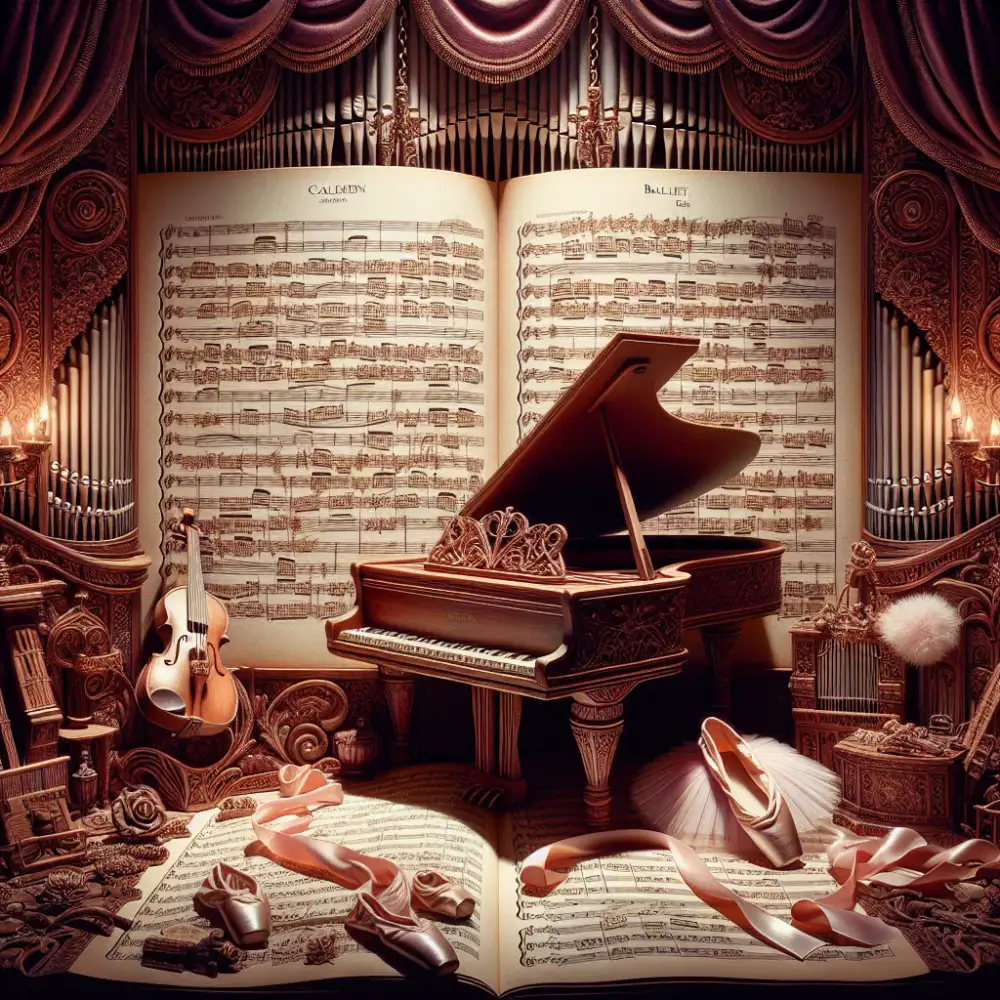
Modern ballet scores can be equally captivating. Explore the works of contemporary composers like Max Richter, Olafur Arnalds, and Joep Beving. Their minimalist and atmospheric compositions provide a beautiful backdrop for contemporary ballet. For a more upbeat tempo, consider incorporating works from film scores like The Black Swan or Amélie. These soundtracks often feature a blend of classical and modern elements, perfect for adding dynamism to your routine.
Ultimately, the best ballet music playlist is one that resonates with you. Experiment with different composers, eras, and styles to curate a collection that inspires you to move with grace and passion.
Creating Atmosphere and Emotion
Ballet music does more than just provide a rhythmic base for dancers. It is the lifeblood of the performance, breathing emotion and atmosphere into every movement. Composers, through a language of soaring melodies, dramatic crescendos, and delicate pizzicatos, paint vivid landscapes and stir deep emotions within the audience.
Imagine the fluttering flutes and harp glissandi that transport us to the magical realm of "Swan Lake," instantly evoking a sense of enchantment and wonder. Or the ominous, rumbling timpani and low brass that foreshadow impending doom in "Romeo and Juliet," their dissonance mirroring the escalating conflict.
Music dictates the emotional temperature of a scene. A delicate adagio can express the tenderness of a budding romance, while a triumphant polonaise can embody the grandeur of a royal court. Even silence, strategically placed, can be incredibly powerful, heightening tension or underscoring the weight of a particular moment.
The relationship between music and dance in ballet is symbiotic. Music inspires movement, and movement, in turn, breathes life into the music. It's a dialogue, a conversation without words, where emotion and atmosphere are the language understood by all.
The Evolution of Ballet Music
Ballet music has undergone a captivating transformation alongside the art form itself. In the opulent courts of the Italian Renaissance, ballet emerged as a form of entertainment for the nobility. During this early period, music played a supporting role, often consisting of popular tunes and dances of the time. As ballet transitioned to France under the patronage of Louis XIV, music gained greater prominence. Jean-Baptiste Lully, the court composer, revolutionized ballet music with his grand and stately compositions. Lully's music, characterized by its rhythmic drive and majestic melodies, established a foundation for future ballet scores.
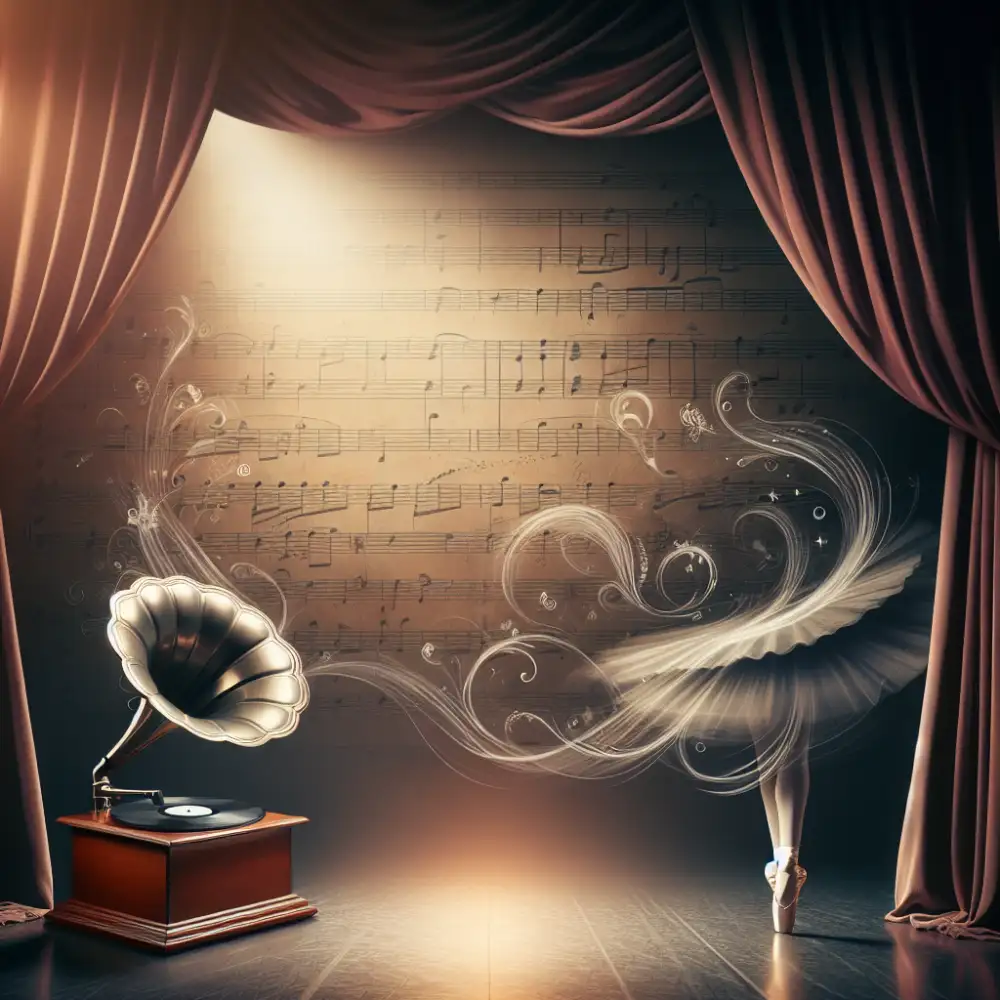
The Classical era witnessed a flourishing of ballet music, particularly in the works of composers like Christoph Willibald Gluck and Wolfgang Amadeus Mozart. Gluck's operas, with their emphasis on dramatic storytelling and integrated ballets, influenced the development of ballet music. Mozart's ballets, such as "Don Giovanni" and "The Magic Flute," showcased his genius for melody and his ability to create music that enhanced the emotions and narrative of the dance. The Romantic era marked a turning point in ballet music. Composers like Pyotr Ilyich Tchaikovsky elevated ballet scores to new heights of expressiveness and sophistication. Tchaikovsky's iconic ballets, including "Swan Lake," "The Sleeping Beauty," and "The Nutcracker," featured lush orchestrations, memorable melodies, and a deep understanding of the emotional nuances of dance.
In the 20th century, ballet music continued to evolve, embracing new sounds and styles. Composers like Igor Stravinsky, with his groundbreaking scores for "The Rite of Spring" and "Petrushka," challenged traditional notions of ballet music. Stravinsky's dissonant harmonies, complex rhythms, and use of folk melodies created a revolutionary sound world that shocked and captivated audiences. Other notable 20th-century ballet composers include Sergei Prokofiev, Dmitri Shostakovich, and Aaron Copland, each bringing their unique musical language to the art form.
Today, ballet music encompasses a wide range of styles and influences. Contemporary choreographers often collaborate with living composers to create original scores that push the boundaries of dance and music. From electronic soundscapes to minimalist compositions, ballet music continues to evolve, reflecting the creative spirit of our time. Whether drawing inspiration from the past or exploring new sonic territories, ballet music remains an integral part of this captivating art form.
Beyond the Stage: Ballet in Film
Ballet and film have long been intertwined, each art form influencing and inspiring the other. While ballet on stage is a live experience, film offers a unique perspective, bringing ballet to a wider audience and immortalizing performances. Music plays a vital role in this translation, serving as more than just accompaniment.
Film scores for ballets often draw from existing classical pieces, giving them a new life and context. Iconic ballets like "Swan Lake" and "The Nutcracker" are instantly recognizable through their Tchaikovsky scores, which have become synonymous with the grace and drama of the choreography. Film allows for nuanced manipulation of the music, using techniques like leitmotifs to highlight characters or themes, deepening the emotional impact.
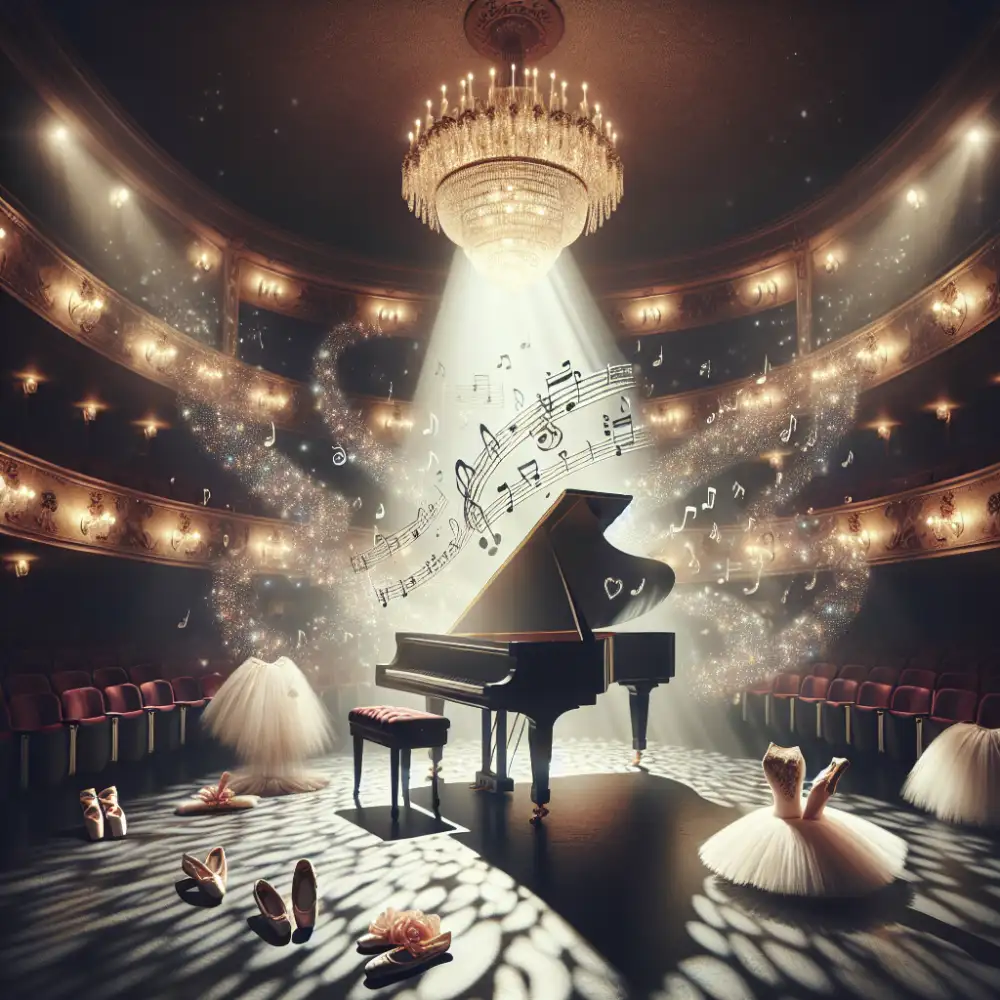
Beyond classical pieces, contemporary ballet films often feature original scores that blend genres like electronic, jazz, or world music. This eclectic approach mirrors the evolving nature of ballet itself, pushing boundaries and exploring new forms of expression. The use of popular music in films like "Black Swan" and "Billy Elliot" further broadens the appeal of ballet, connecting with audiences on a familiar level while adding layers of meaning to the narrative.
The editing process in ballet films is intricately tied to the music. Cuts, fades, and montages are often choreographed to the rhythm and tempo, enhancing the visual flow and creating a seamless fusion of sound and movement. Slow motion sequences, close-ups on dancers' expressions, and sweeping camera movements synchronized with the music amplify the emotional impact of a performance, revealing nuances that might be missed on stage.
In essence, film offers a powerful medium for experiencing ballet, preserving its beauty and power for generations to come. The interplay between music, choreography, and cinematography creates a captivating art form that transcends the limitations of the stage, inviting audiences to appreciate the artistry and athleticism of ballet in a whole new light.
Ballet Music for Relaxation
Ballet music often evokes a sense of grace, beauty, and tranquility. The delicate melodies, flowing rhythms, and ethereal harmonies can create a calming and relaxing atmosphere. Classical ballet scores, in particular, are known for their ability to soothe the mind and body. Composers like Pyotr Ilyich Tchaikovsky, with his iconic scores for "Swan Lake" and "The Nutcracker," created timeless masterpieces that continue to enchant and inspire. The use of harp, flute, and strings in ballet music further enhances its relaxing qualities. These instruments produce soft, mellow tones that can help to reduce stress and promote a sense of well-being.
Many people find that listening to ballet music during yoga, meditation, or simply as background music for relaxation can be incredibly beneficial. The gentle tempos and graceful melodies can help to quiet the mind, release tension, and promote a sense of inner peace. Ballet music can also be a source of inspiration and creativity. The evocative melodies and dramatic narratives often found in ballet scores can spark the imagination and transport listeners to other worlds. Whether you are a seasoned ballet enthusiast or simply looking for a new genre of music to relax to, ballet music offers a rich and rewarding listening experience.
Learning About Ballet Composers
Ballet, with its graceful movements and captivating stories, wouldn't be the same without music. While we often celebrate the dancers and choreographers, the composers who create the sonic landscapes for these ballets deserve equal recognition. Diving into the world of ballet composers can deepen your appreciation for this art form.
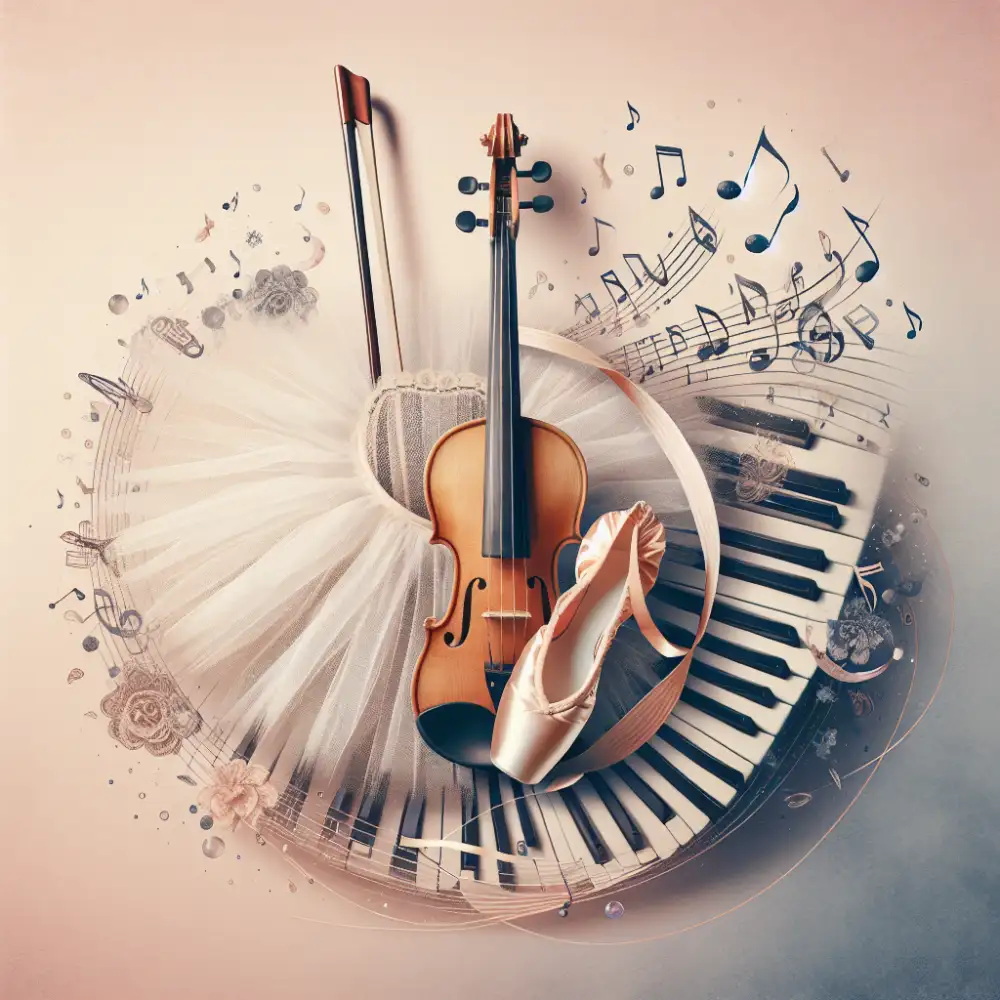
Some composers, like Pyotr Ilyich Tchaikovsky, are practically synonymous with ballet. His iconic scores for "Swan Lake," "The Sleeping Beauty," and "The Nutcracker" are masterpieces that perfectly capture the emotions and narratives of these ballets. Tchaikovsky's ability to blend sweeping melodies with dramatic orchestration set a high bar for ballet music.
Igor Stravinsky is another giant in the world of ballet music. His groundbreaking work on "The Rite of Spring" caused a sensation and changed the course of music history. Stravinsky's use of dissonance and rhythmic complexity brought a raw, primal energy to ballet.
Moving beyond the classical period, composers like Dmitri Shostakovich brought their unique voices to ballet. His score for "Romeo and Juliet" is full of drama and passion, reflecting the tragic love story. Shostakovich's ability to evoke a wide range of emotions through music made him a perfect fit for ballet.
Contemporary ballet has also seen its share of innovative composers. Joby Talbot's score for "Alice's Adventures in Wonderland" is a whimsical and enchanting journey through sound, perfectly complementing the ballet's fantastical story.
Exploring the lives and works of these composers can enrich your understanding and enjoyment of ballet. Listening to their music independently allows you to appreciate the nuances and complexities of their compositions. You'll start to notice how they use tempo, rhythm, and instrumentation to create specific moods and enhance the storytelling on stage.
Sharing Your Love for Ballet Music
Ballet music is incredibly powerful and moving, even for those who haven't experienced a live performance. Sharing your love for this genre can open up a whole new world of appreciation for your friends and family. Start by playing them some of your favorite pieces, whether it's the sweeping romance of Tchaikovsky's "Swan Lake" or the fiery drama of Stravinsky's "The Rite of Spring". You can find countless recordings and playlists online, from classical ballet scores to contemporary works.
To enhance their experience, show them videos of ballet dancers moving to the music. Seeing the way the dancers interpret and embody the music can be a powerful visual aid. Platforms like YouTube offer a treasure trove of ballet clips from various productions and choreographers. If you're feeling adventurous, try incorporating ballet music into everyday activities. Play it while cooking, cleaning, or even working out. You might be surprised how the music can elevate your mood and inspire you.
Don't be afraid to share your knowledge and passion. Explain what you love about the music, the instruments used, the emotions it evokes, or the stories it tells. You can even learn some fun facts about the composers or the history of ballet to make it more engaging. Sharing your passion for ballet music is a wonderful way to connect with others and introduce them to the beauty and artistry of this captivating genre.
Published: 28. 06. 2024
Category: entertainment

